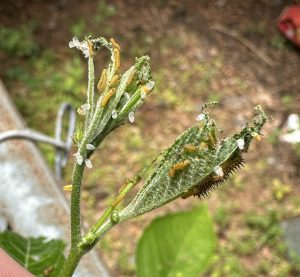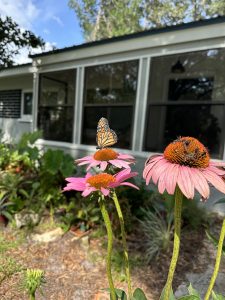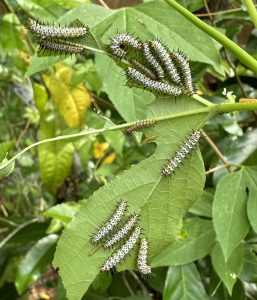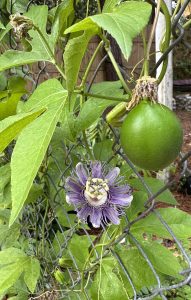It’s that time of year when you bump into a bumble bee and watch butterflies fluttering around as you water the garden. If you’re like me, you’ve been waiting patiently for butterflies to start laying their eggs. Butterflies and moths lay eggs on specialized plants that caterpillars depend on once they hatch. These host plants provide caterpillars with food, shelter, and protection- and they can be anything from a small weed to a tall oak tree.
While host plants feed caterpillars, nectar plants feed butterflies. Host plants are specific to each butterfly or moth, while nectar plants attract and feed many different species. Provide a variety of shapes, sizes, and colors of flowering plants to attract different butterflies. To support all life stages of butterflies it’s important to have both host and nectar plants in your garden.
Keep an eye out for signs of caterpillars on your host plants and remember that these plants are meant to be eaten! Because caterpillars feed exclusively on their host plants, they won’t harm the rest of your landscape. Before you reach for pesticides when you see leaf damage, take a moment to identify what’s causing it. It may just be hungry caterpillars getting ready to transform into butterflies. For more information see this EDIS publication about butterfly gardening in Florida, https://edis.ifas.ufl.edu/publication/UW057.
Want to support both caterpillars and butterflies with one plant? Try passionflower! Florida is home to 6 native species of passionflower. Maypop or wild passionflower, Passiflora incarnata, is the showiest of these. Flowers of pink and purple cover the passionflower from the summer to fall, offering nectar for bees, butterflies and hummingbirds. Passiflora species are host plants for the zebra longwing and gulf fritillary caterpillars.
- Land, Water, and Lawns: Why Everyday Choices Matter - December 4, 2025
- Let’s Scout the Garden - October 23, 2025
- Non-GMO Seeds at the Garden Center? They All Are! - September 25, 2025






